This potato gratin has all the classic Italian flavours from the North of Italy – ham, a rich cheese, and cream. It’s a delicious side dish to make for Sunday lunch, including Sunday roasts, and special occasions too. As most of our recipes, it features very few ingredients, all high quality of course.
What to expect: when you bite into this potato dish your palate will be hugged by a creamy, cheesy and gooey mouthful with a slightly salty taste, and a final crispy note.
We are making this delicious side dish with all the Italian trimmings, yet that doesn’t mean we can take credit for its origin.
For that, we have to thank our French neighbours. They really love making this recipe with lots of cream and cheese on top.
Apparently, this dish is a variation of the more popular one, potatoes dauphinoise. The latter, is heavier on cream.
The dauphinoise dish was first prepared in 1788 in the kitchen of the house of Clermont- Tonnerre in Dauphine’, France. The Duke Charles Henri was hosting a special dinner when this iconic dish made its first official appearance in history.
In French, au gratin means with a crust. The word comes from the verb gratter which means to grate. The name is understandable considering that the crusty topping of this dish is usually a combination of grated cheese, breadcrumbs and herbs which help to form the famous and delicious crust.
If you have never had one, or maybe you just don’t remember the name, you might still wondering what’s this dish. It’s simply a casserole filled with layers of potatoes, cream and cheese.
Following a similar process, you can make different types of this dish, including zucchini gratin, spud zucchini gratin, cauliflower and broccoli gratin, mixed vegetables gratin, and many more.
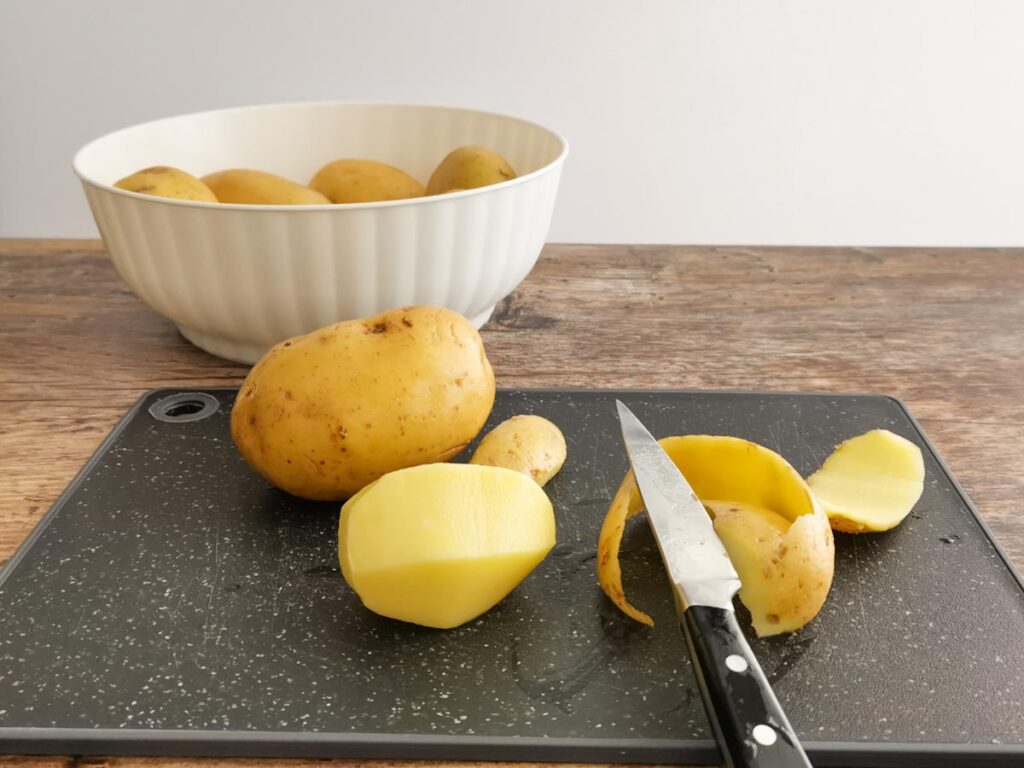
Since spuds are the start of this dish, it’s important one uses the right type. A starchy variety like King Edward are the perfect kind to use in this recipe, plus they are widely available and economical.
After potatoes, cheese is the second most important ingredient in our version of the dish. You can use different types of Italian cheeses, including Galbanino, fontina, provolone and scamorza.
We are using Galbanino, which is a sticky cheese with a rich and sweet milk taste that comes in a wax protective case. We will also be using grated parmesan cheese for the crispy top.
If you don’t want to use an Italian cheese, you can use a mild cheddar.
And, if you want to do it the French way, you can make yours with gruyere.
Cream is the third most important ingredient in the Italian version of a this recipe. For the original French recipe, cream would be the second most important one.
Unless you are making this dish with homemade bechamel, which I am sure would taste as delicious, you don’t need to use milk in this recipe.
A regular cooking cream is all you need. If you are intolerant to cream, opt for lactose free or dairy free.
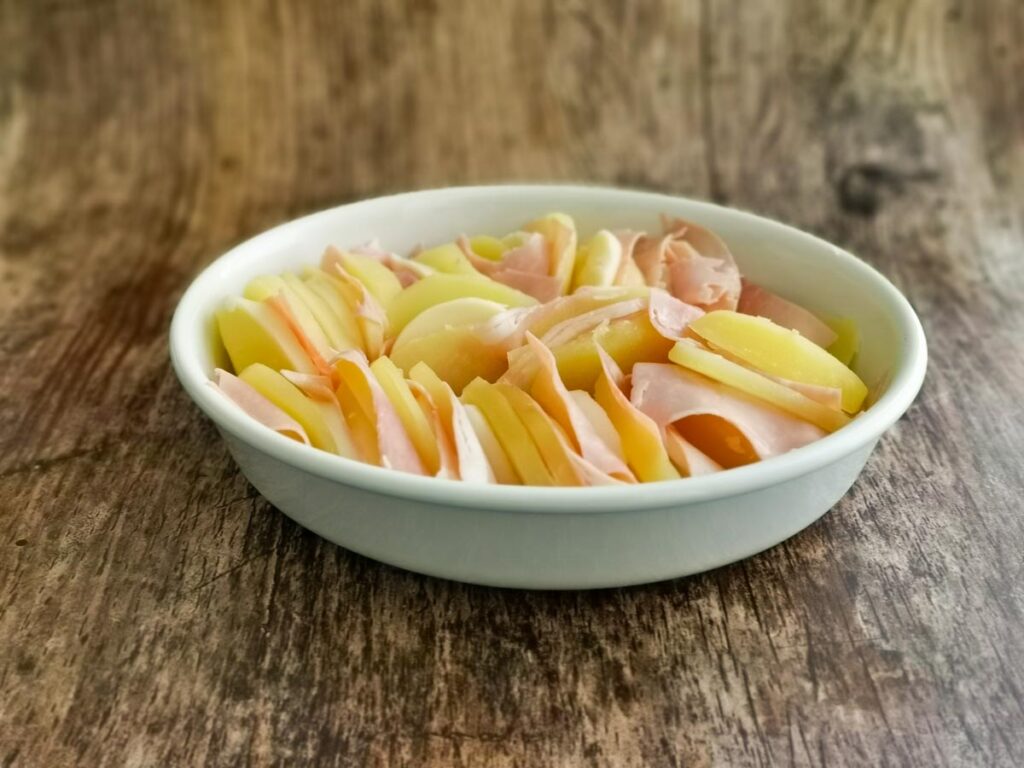
Below you’ll find the full recipe to make our Italian take on this French dish. Follow along on the screen, or feel free to print out the recipe card.
As for ingredients, you will find the ingredients we are using or any suggested alternative in your local supermarket. Make sure you are using a high quality extra virgin olive oil like Belmorso EVOO.

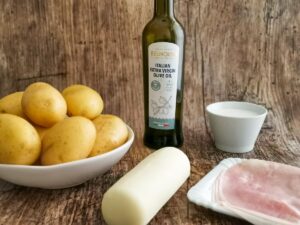
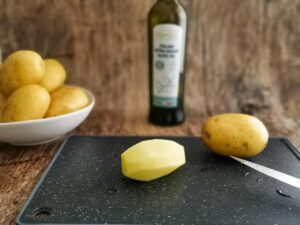
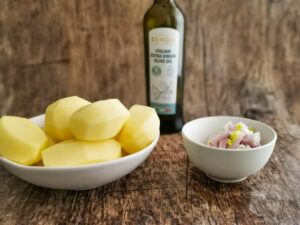
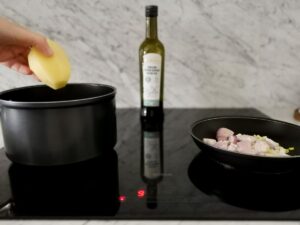
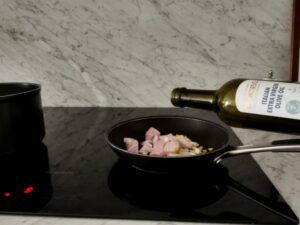
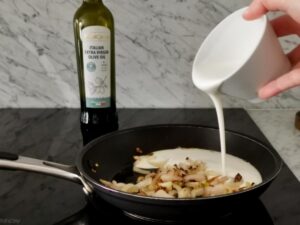
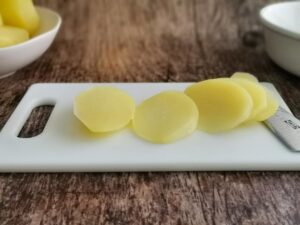
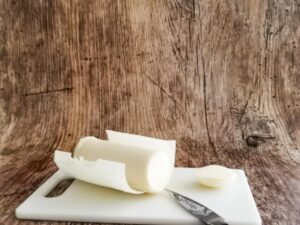
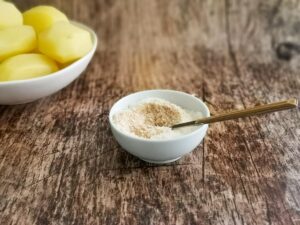
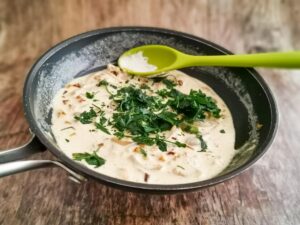
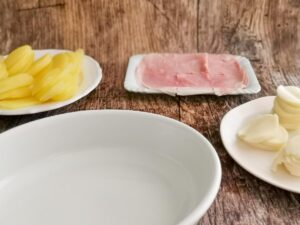
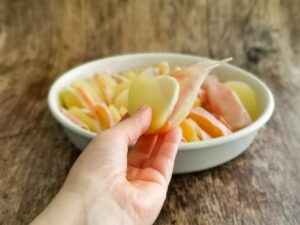
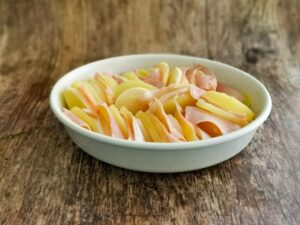
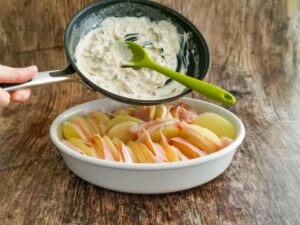
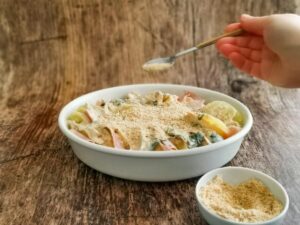
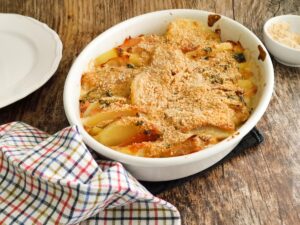
If you want to make this recipe for one or for two, adjust the ingredients, and use a smaller dish.
You can definitely make this recipe without cream, just expect a crispy result rather than a creamy one. If the issue is an intolerance to cream, you can do like us and use a vegan cream, or a lactose free one. It’s delicious.
If you really want to skip the cream, you can check out this no cream recipe from Netmums.
To make this side dish vegan, you simply have to cut the ham or use a vegan alternative, and replace the cheese and cream with a vegan option. You can find plenty of vegan cheeses and parmesan options at larger supermarkets; the same holds for vegan cooking cream.
By just cutting the ham, this recipe quickly turns vegetarian.
For both vegan and vegetarian versions of this recipe, you can replace ham with a few artisan sundried tomatoes.
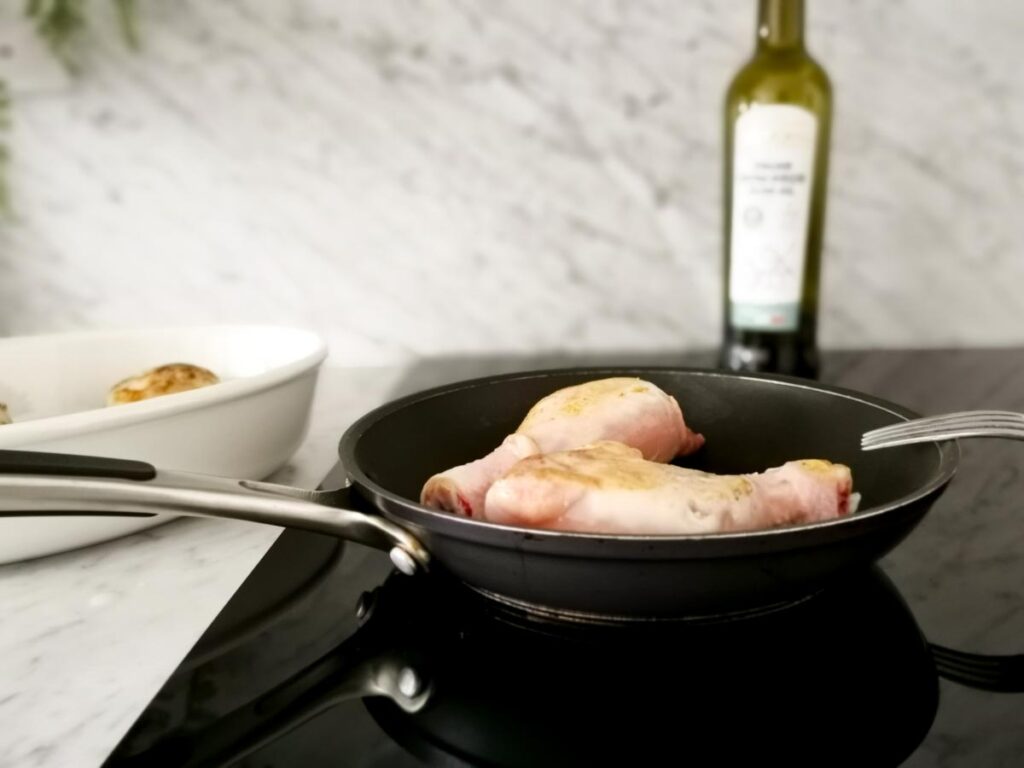
You are probably thinking how can I serve potato this. Well, the options are nearly endless. The most obvious pairing is to have it with a protein. Below, I am listing different meal ideas.
If you have other questions about this dish that I haven’t already answered, you should find the answer in this section.